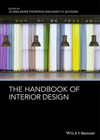Milan Dispatch: The Business of Design at the 2015 Salone del Mobile

The Salone Satellite, where aspiring designers show off their prototypes.
Photo © Andrea Mariani

Launched at Salone last year, Brazilian company TOG – ALLCREATORSTOGETHER – offers highly customizable, and affordable, furniture. Philippe Starck’s Maria Maria chair is made of wood and woven natural fibers with a window-like backrest.
Photo © Nicole Marnati

Dream Air is a new chair by Eugeni Quitllet for Kartell that combines a wood base with a polycarbonate seat.
Image courtesy Kartell

The Alfi seating collection by Jasper Morrison for Emeco is made of 100% reclaimed post-industrial waste – 92.5% polypropylene combined with 7.5% wood fiber.
Image courtesy Emeco

Coalesse introduced an ultra-lightweight, carbon fiber chair designed by Michael Young.
Image courtesy Coalesse

The Polder Sofa, designed for Vitra by Hella Jongerius in 2005, has been reimagined for its 10th anniversary. The Dutch designer has updated its design, bringing new color and materials and fresh details to the sofa.
Image courtesy Vitra

Knoll's Bertoia plastic side chairs.
Image courtesy Knoll

Saen is a table by Gabriele and Oscar Buratti for Alias that combines a central concrete base with tops in concrete, natural oak, or glass.
Image courtesy Alias

Two circular supports—the seat and the back—make up Double Zero, a new chair design by Dvid Adjaye for Moroso.
Image courtesy Moroso

Cora pendant light from Roll & Hill.
Image courtesy Roll & Hill

The new table lamp designed by Luca Nichetto and Nendo for Foscarini is named Kurage after the Japanese word indicating the jellyfish which the lamp resembles.
Image courtesy Foscarini

Exhibited in the Artemide booth in constant spinning motion, the Les Danseuses pendant lamp by Atelier Oi for Danese was inspired by the dance of whirling Dervishes.
Image courtesy Artemide

Inside the FontanaArte booth.
Photo © Carola Merello

The fairgrounds this week.
Photo © Alessandro Russotti














Twenty immense pavilions flank a mile-long walkway at the fairgrounds in Milan. For the Salone del Mobile, each of them is teeming with booths showcasing thousands of new products, mostly furniture, but also lighting in this year of Euroluce, the bi-annual lighting exhibition. The official figures for the 2015 edition of the world’s biggest furniture fair, which runs through April 19, count 2,106 exhibitors spread out over 2 million square feet, plus 700 aspiring designers showing off their prototypes at the Salone Satellite. It is within this context that Dutch designer Hella Jongerius, together with design theorist Louise Schouwenberg, released the manifesto Beyond the New: A Search for Ideals in Design, where, among other things, they say, "design is not about products."
Walking through the Salone pavilions this year, the products on display are clearly not the protagonists of the show. Rather, the story of this edition revolves around the manufacturers—many of the major Italian players throughout the 54-year history of the fair finding themselves in a period of transition.
Manufacturers like Moroso and Cappellini, for years showstoppers at this event, were disappointing at best. After a downward spiral that saw once-innovative Driade, a producer of Philippe Starck's iconic early designs, face bankruptcy while turning out garish designs, the company showed restraint in its booth with minimalist projects by esteemed designers. It reintroduced shelving by Konstantin Grcic that had been out of production for years, and presented new work from David Chipperfield. The London-based architect, recently named artistic director for Driade, also designed the brand's new, smaller Milan flagship after it was forced to abandon its sprawling showroom on fashionable Via Manzoni.
Other companies continue to move, for better or worse, farther and farther away from their origins. Kartell, which made a name for itself for its groundbreaking use of plastics in furniture, these days seems focused on incorporating as many materials as possible in its products. Starting with fabrics several years back, Kartell this year showed pieces that alternately combine plastic with wood and ceramics. (Not to mention that its collection in recent years grew from furniture to include an expanded assortment of lighting, fashion, dinnerware, and now fragrances.) Alias, founded as a specialist in aluminum, showed tables combining concrete, wood, and glass.
Rumors persist that B&B Italia, which does not exhibit at the fair, is for sale. Small, family-run companies continue to be swallowed up by bigger outfits, either out of financial or competitive necessity, or lack of interest in the family business among younger generations.
Regarding the discipline of design, Jongerius and Schouwenberg say it "lacks an intimate interweaving of the values that once inspired designers, as well as the producers of their ideas." While there is no city poised to replace Milan as the worldwide center of design, the Italian furniture industry—for decades ranking alongside food, fashion, and fast cars as a major driver of the country's economy, and representing a means for connecting innovative designers with resourceful craftsmen—finds itself facing an uncertain future.



















